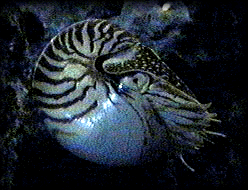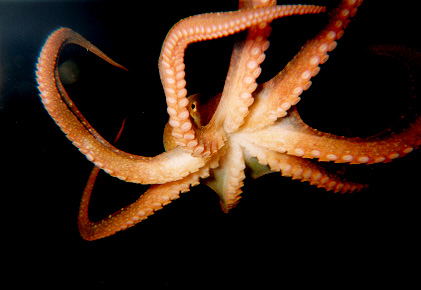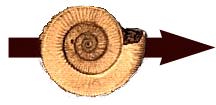

Cephalopods may be divided morphologically into: ECTOCOCHLIAN FORMS
ECTOCOCHLIAN FORMS
fossil cephalopods
 ENDOCOCHLIAN FORMS
ENDOCOCHLIAN FORMS
structures, although they include forms without
solid internal parts; for example, an octopus
Figure 5: Octopus rubescens.


